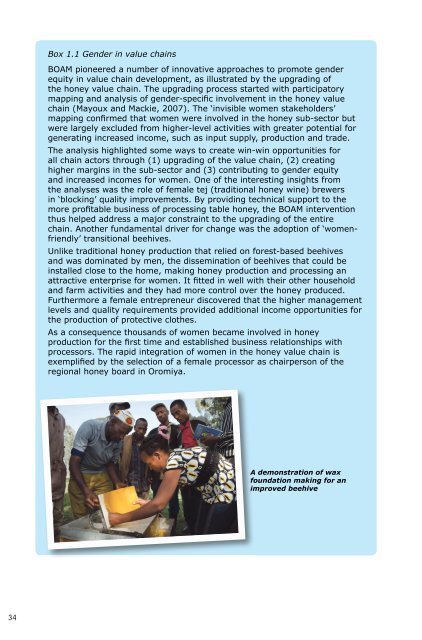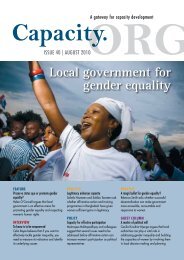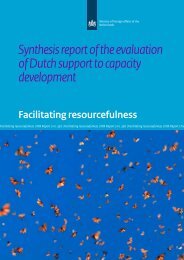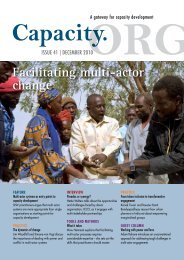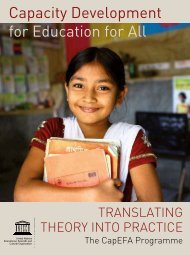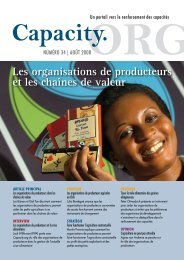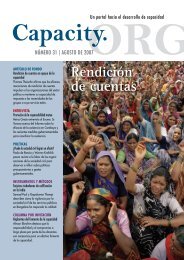Pro-Poor Value Chain Development - Capacity.org
Pro-Poor Value Chain Development - Capacity.org
Pro-Poor Value Chain Development - Capacity.org
You also want an ePaper? Increase the reach of your titles
YUMPU automatically turns print PDFs into web optimized ePapers that Google loves.
34<br />
Box 1.1 Gender in value chains<br />
BOAM pioneered a number of innovative approaches to promote gender<br />
equity in value chain development, as illustrated by the upgrading of<br />
the honey value chain. The upgrading process started with participatory<br />
mapping and analysis of gender-specifi c involvement in the honey value<br />
chain (Mayoux and Mackie, 2007). The ‘invisible women stakeholders’<br />
mapping confi rmed that women were involved in the honey sub-sector but<br />
were largely excluded from higher-level activities with greater potential for<br />
generating increased income, such as input supply, production and trade.<br />
The analysis highlighted some ways to create win-win opportunities for<br />
all chain actors through (1) upgrading of the value chain, (2) creating<br />
higher margins in the sub-sector and (3) contributing to gender equity<br />
and increased incomes for women. One of the interesting insights from<br />
the analyses was the role of female tej (traditional honey wine) brewers<br />
in ‘blocking’ quality improvements. By providing technical support to the<br />
more profi table business of processing table honey, the BOAM intervention<br />
thus helped address a major constraint to the upgrading of the entire<br />
chain. Another fundamental driver for change was the adoption of ‘womenfriendly’<br />
transitional beehives.<br />
Unlike traditional honey production that relied on forest-based beehives<br />
and was dominated by men, the dissemination of beehives that could be<br />
installed close to the home, making honey production and processing an<br />
attractive enterprise for women. It fi tted in well with their other household<br />
and farm activities and they had more control over the honey produced.<br />
Furthermore a female entrepreneur discovered that the higher management<br />
levels and quality requirements provided additional income opportunities for<br />
the production of protective clothes.<br />
As a consequence thousands of women became involved in honey<br />
production for the fi rst time and established business relationships with<br />
processors. The rapid integration of women in the honey value chain is<br />
exemplifi ed by the selection of a female processor as chairperson of the<br />
regional honey board in Oromiya.<br />
A demonstration of wax<br />
foundation making for an<br />
improved beehive


